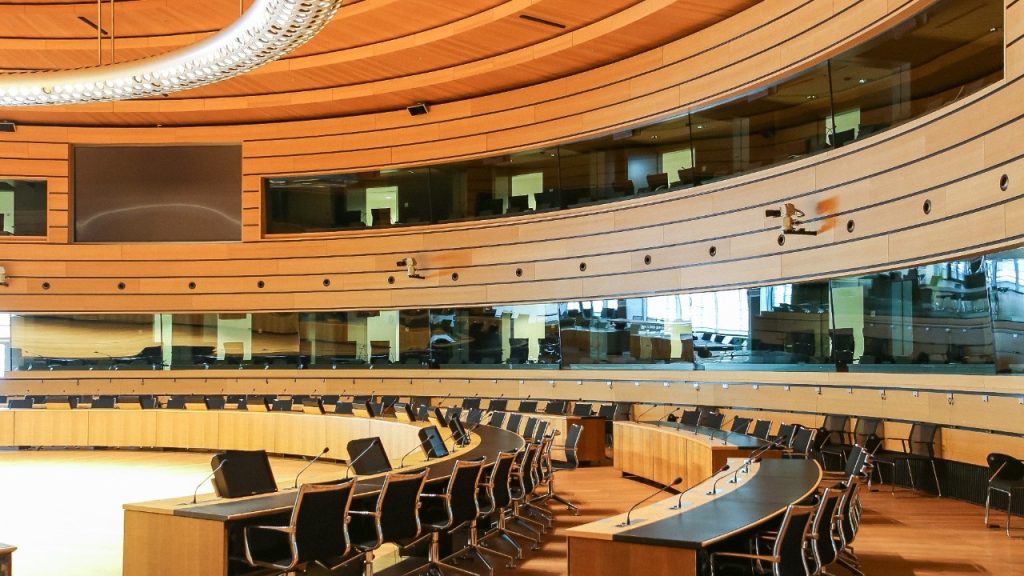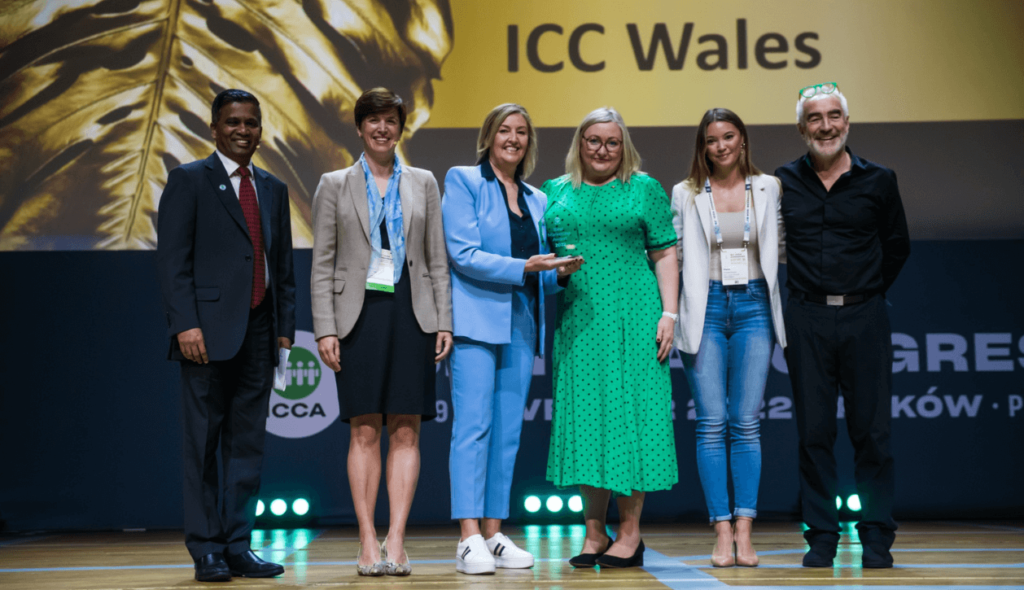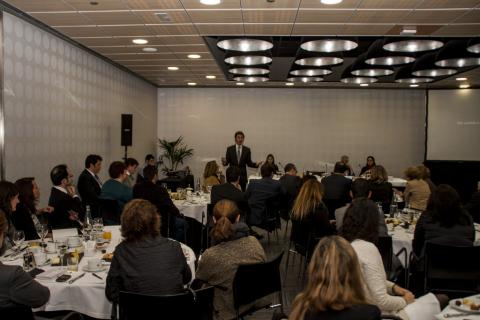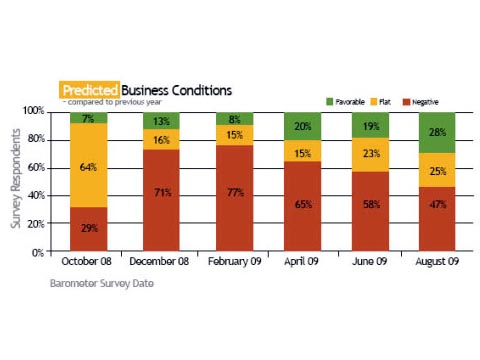A study points to a significant recovery in late 2021
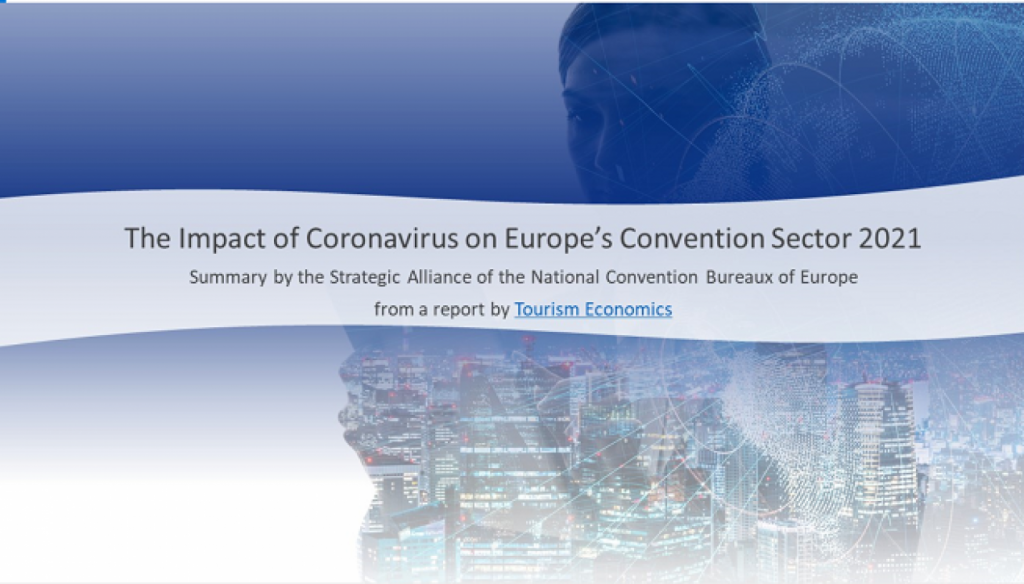
Share news
Listen
Significant end-of-year recovery. The study anticipates that the end of the year will see the end of restrictions: “by 2022 most restrictions will have been lifted. The removal of restrictions will give large corporations and event planners confidence in the future and will allow some rapid recovery of the sector”, pointing to an optimistic message. Indeed, they predict the last 3 months of 2021 to show an almost total recovery: the event market will wigh 80, 90 and 90% respectively of their 2019 levels. A very high level, which can be explained by the need to catch up and recover events which could not take place in the last year and a half, but this wont be the end of the fight, as we will now see…
… with a still limited market until 2025. Despite this year-end boom, spend levels in 2022 will still be 33% below 2019 levels. The report points to “lingering restrictions and negative sentiment” as reasons for several poor years ahead. “The shift to hybrid event formats will also mean that average attendance levels for all events will stay below 2019 levels until 2024”, and the average spend will also remain depressed, driven by a reduction in the average length of stay per trip and the delayed recovery of international attendees. So their scenario assumes that, although the number of events will return to pre-crisis levels by 2023, the recovery of average attendance will lag behind events by two years. Durably smaller events, is what awaits us according to the report, with 2019 attendance levels not reached until 2024. This factor, in a market in which there was already before the pandemic a tendency towards smaller events, may not be very relevant.
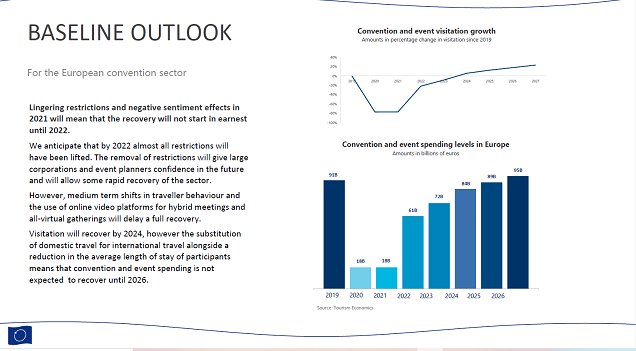
Various scenarios. Prediction obviously requires baseline assumptions which go beyond our industry, such as the vaccine supply and rollout, the timeframe for exiting restrictions and the future behaviour of participants. The pessimistic version forecasts that the continued prevalence and effects of the virus will see some additional restrictions maintained into 2022. This scenario also assumes that the format of conferences and meetings will be different for some years to come, with many events continuing to be virtual or hybrid. Particularly the changes in attendee behaviour around virtual attendance and the continued prominence of hybrid set-ups mean that the road to recovery also comes with the need for the events community to develop appropriate and innovative products that will inspire and engage participants in the future.
The Strategic Alliance of the National Convention Bureaux of Europe is a network of national destination marketing organisations, aiming at strengthening Europe’s position as a leading destination for international business events.


